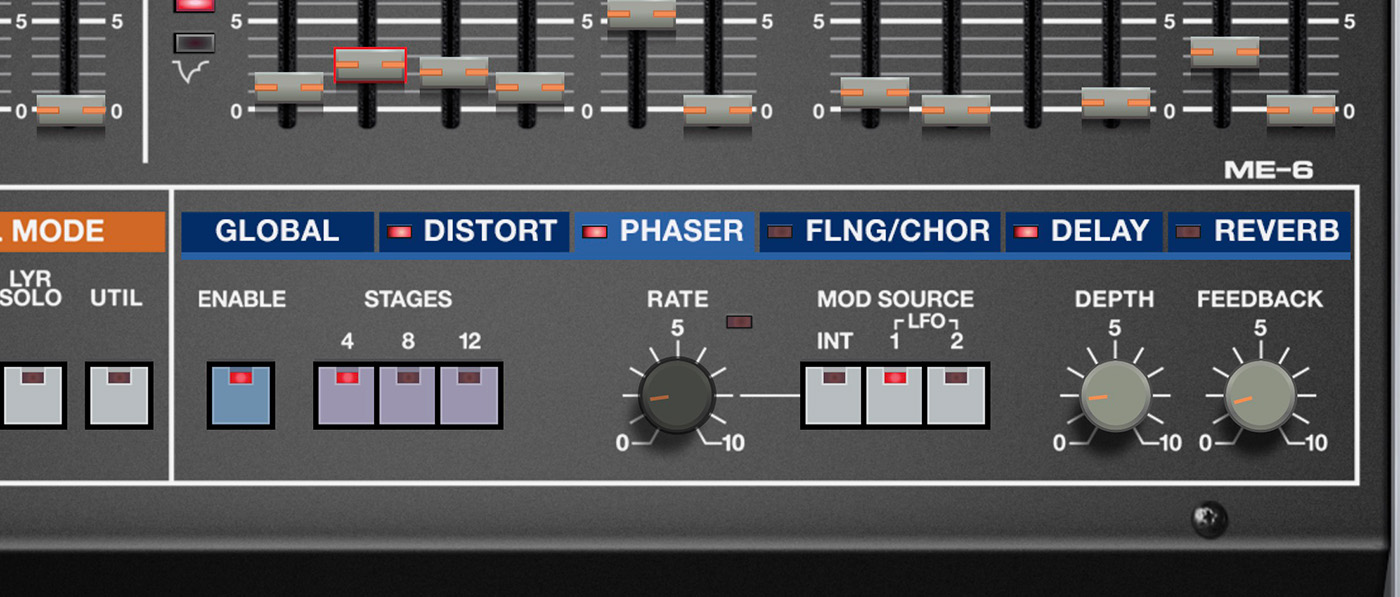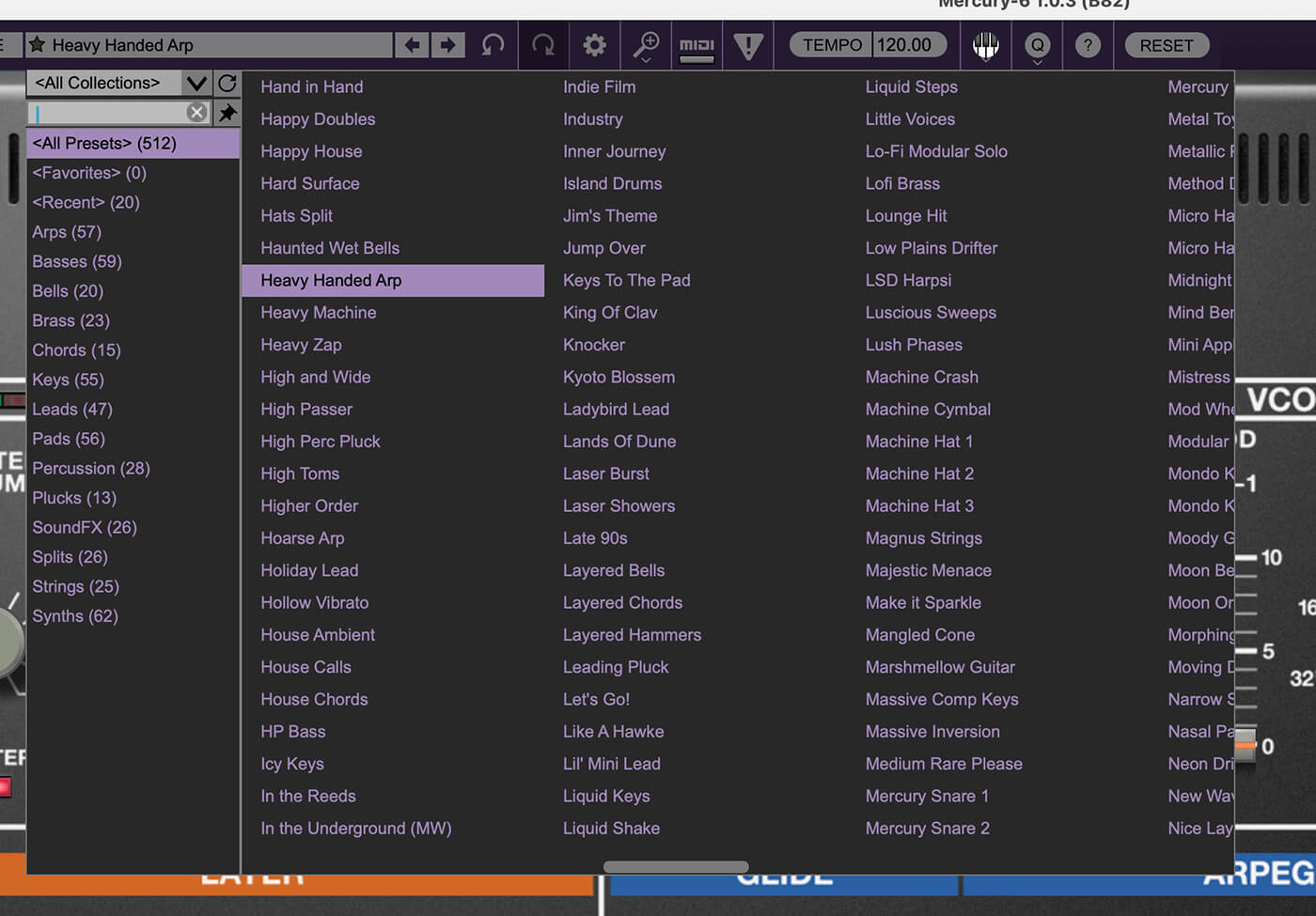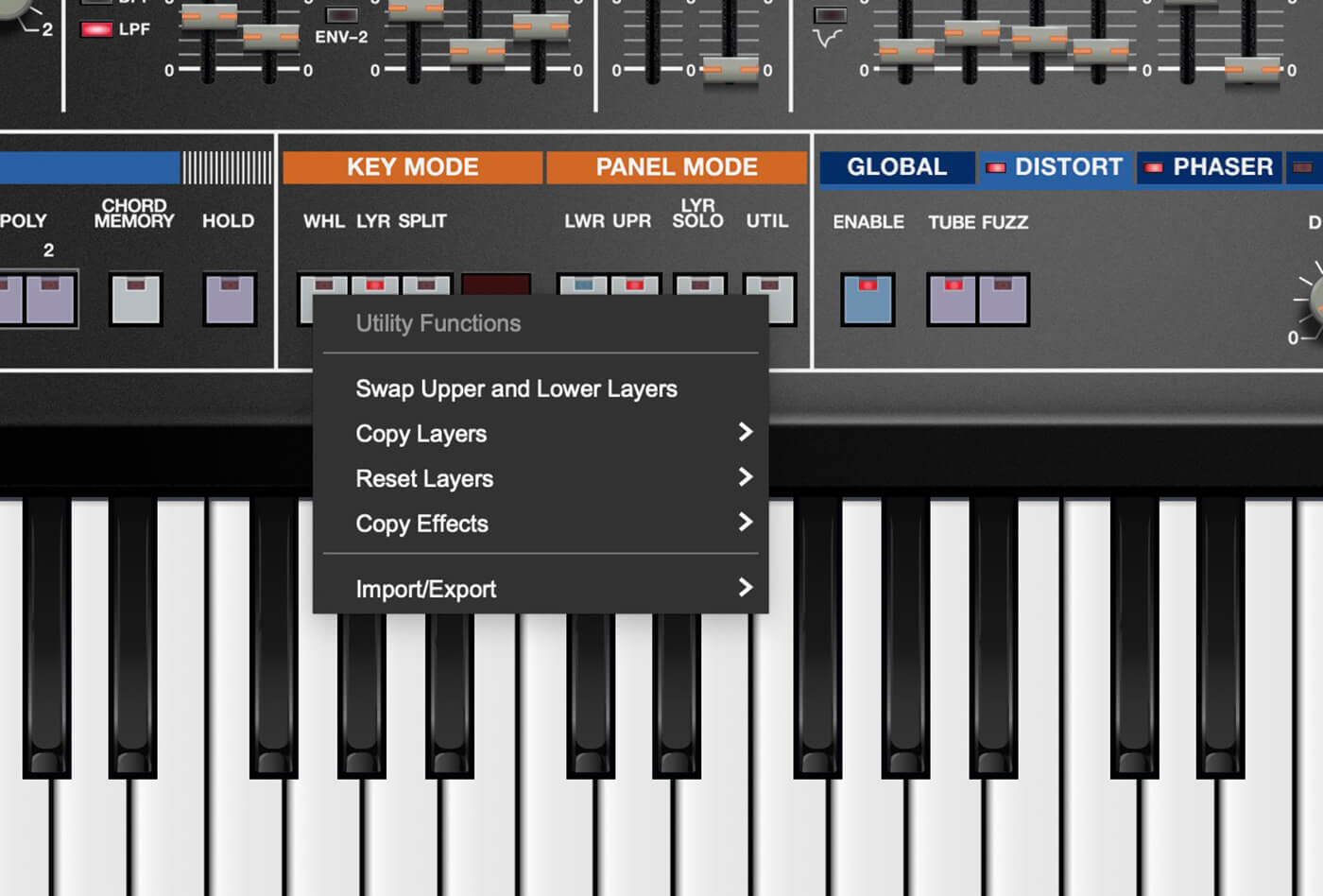Cherry Audio’s first release of 2023 is a recreation of the legendary Roland Jupiter-6 analogue polysynth, first released in 1983. With a noticeably rougher edge than the flagship Jupiter-8 that came before it, the Jupiter-6 was billed as a more affordable alternative. It also introduced a true multimode filter and was one of the first synths to support MIDI and a split keyboard mode. Though expensive at the time, it found its way onto countless records by the likes of Orbital, The Prodigy, Vangelis, The Chemical Brothers and many more.
The Cherry Audio Mercury-6 carries neither the price tag nor the physical heft of the original, but significantly expands its capabilities. Coming in all major plugin formats as well as a standalone version, it weighs in at a tiny 20MB and will run on 64-bit versions of MacOS 10.13 and Windows 7 or higher. Cherry’s familiar wrapper format is present, including the toolbar of various options – such as the ability to zoom the interface in or out to suit your screen size, a Focus mode to zoom and make the interface scrollable, and a popout MIDI assignment window for managing controller assignments, with virtually every parameter assignable via a right-click. Over 500 presets are supplied, sorted by category and up to 4x oversampling quality is available. It should be noted that overall the synth is quite resource-light and kind to your CPU.
Dive right in
Like the hardware on which it is based, the Mercury-6 is among the more approachable (virtual) analogue synths, with parameters pretty much all laid out and barely any menu-diving to be done. While the original could have a tendency to run out of notes with its 6-voice polyphony, here Cherry has not only upped this to 16 voices but added an entirely new second layer with a further 16. Each voice has two VCOs with combined waveform capabilities: triangle, ramp sawtooth, noise, and square or variable pulse.

The instrument can be placed into several modes, managed in the Key and Panel Mode sections. There’s Whole, where the whole keyboard plays the upper layer only, Layer where upper and lower voices are stacked across the whole keyboard, and Split where you can specify the split point for separating lower and upper voices. Then, in the Panel section you can choose whether the instrument displays the controls for the lower or upper voices and also solo either layer – handy for hearing more clearly the changes you are making. A Utility menu allows you to swap, copy or reset layers or copy effects banks between layers.

Techno sounds
While some analogue synths can suffer from a predominance of slightly vanilla tones, the Mercury-6 comes out all guns blazing. It sounds simply huge, thanks in part to the reproduction of the original’s advanced VCO-2 to VCO-1 FM cross-modulation which helps to create a harder and more urgent edge to the sounds. The synthesis sections include a powerful multimode filter, two tempo-syncable LFOs, VCA and envelope sections, but it’s the performance controls that help take things to the next level.
Portamento and Glissando modes let you achieve soaring sweeps, while monophonic Unison Solo and powerful polyphonic Unison Share modes bring a rich and wide sound to proceedings. Each layer also has a drift control for oscillators and filter frequencies to add to the authentic analogue character and slight imperfection of the sound, should you wish to add it. Then there’s a powerful arpeggiator that can be free-running or tempo-synced and applied independently to both layers for maximum flexibility. A single-key chord memory mode lets you assign multiple note presses to a single key when active, for house music-style performance.

Another major addition to the original is a powerful effects section which also works separately for both layers with the option to switch it to global mode to affect both equally. Here, each with its own set of controls you will find distortion, phaser, flanger/chorus, delay and reverb, all of which can be used to add depth and space to your sound. As noted earlier, effects setups can be easily copied between layers too, which saves time when designing sounds.

Mercury bound
The instrument’s presets are sorted by type and cover all the requisite ground, from rich pads through spiky leads, techno basses and huge polysynths. It’s the architecture of the Mercury-6 that really comes into its own in terms of making things interesting, however. The two-layer system means you have double the sound, and the arpeggiator and chord modes mean both layers can be animated and expanded independently. Layering-up these sounds – and adding rich arpeggiation and effects – means the sounds you can create are simply huge. Many of the presets make use of modulation internally too, so waveforms are bent and twisted in addition to any performance controls applied afterwards.

Mercury-6 is an excellent tool for sound design and electronic music and notably for scoring too, capable not just of searing techno sequences, but guttural drones, sinister high-pitched stabs and even electronic percussion. As is often the case with Cherry Audio, we must also come back to the price – an incredibly tempting $69 which, on launch will be just $49. Considering the sheer versatility of this instrument, that’s going to be an absolute bargain for a wide range of musicians and composers, from those working with conventional or electronic styles to people scoring TV, games or movies. If you thought these kinds of recreations of 1980s synths were of interest mostly to knob-twiddlers, Mercury-6 has more than enough firepower and versatility to make you definitively change your mind.

Key Features
- Dual layer voicing architecture with 16-voice polyphony per layer
- Split, stack or layer with independent controls
- Multimode filter with a 24 dB/oct low pass, 24 dB/oct high pass, or 12 dB/oct band pass modes
- Accurate reproduction of the original’s advanced VCO-2 to VCO-1 FM cross-modulation
- Performance controls including arpeggiator and chord mode
- Extensive onboard FX section per-layer
- Unison Solo and Share modes for fat sound
- Over 500 presets
- Per-layer drift control
- Zoom and Focus view modes
- $69 (introductory price of $49 on launch)
- Contact Cherry Audio
- Buy: Cherry Audio




